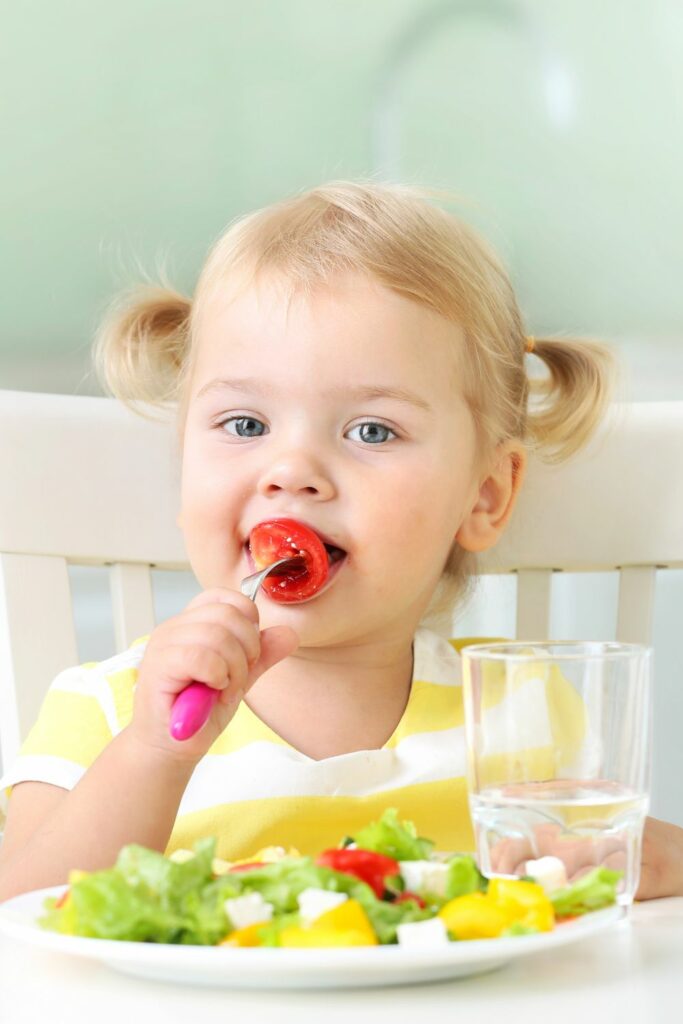In This Article Show
As a mom of three, I’ve navigated the unpredictable waters of parenting, and if there’s one thing I’ve learned, it’s that mealtime with toddlers can often feel like steering a ship through a storm.
Let’s face it: toddlers are wonderfully unpredictable, and that’s especially true when it comes to eating. One day they love broccoli, and the next, it’s the worst food ever. But don’t worry, you’re not alone in this. Countless parents face the same mealtime struggles, and there are practical, fun ways to overcome them.
It’s not just about feeding them; it’s about making these moments enjoyable and less stressful for both you and your little ones. In this post, I’m excited to share with you five proven methods that have transformed mealtime in my household from chaotic to cheerful.
5 Proven Methods to Make Mealtime with Toddlers Less Chaotic and More Fun
In the following sections, we’ll explore how establishing a routine, involving your kids in meal prep, creating a distraction-free zone, introducing fun and healthy meal options, and using positive reinforcement can turn the tide.
1. Establish a Consistent Mealtime Routine

Creating a consistent mealtime routine is like setting the rhythm for a dance that both you and your toddler can follow. It’s not just about when they eat, but about establishing a pattern that brings predictability and comfort to their day.
Here’s why a regular schedule is essential and how you can make it work for your family.
Great deals to snatch for your little ones 🎉
- Predictability Brings Comfort: Just like us, toddlers thrive on routine. Knowing what to expect reduces anxiety and resistance.
- Regulates Appetite: Regular meal and snack times help regulate your child’s hunger cues.
- Better Nutrition: A routine allows you to plan balanced meals with all the necessary nutrients.
- Family Bonding Time: Scheduled meal times create opportunities for family bonding.
2. Engage Toddlers in Meal Preparation

Involving your toddlers in meal preparation is like giving them a backstage pass to a magic show – it piques their curiosity and makes them more excited about the final act: eating!
When toddlers are involved in the making of their meals, they develop a keen interest in what they’re eating. Seeing the process, touching ingredients, and being part of the creation makes them more inclined to try and enjoy their meals.
By involving your toddlers in meal preparation, you’re not only making mealtime more exciting for them but also teaching valuable life skills. It’s a win-win situation where they learn, have fun, and develop a better relationship with food.
3. Introduce Fun and Healthy Meal Options

Introducing fun and healthy meals to toddlers can be like a delightful game of culinary creativity. The key is to find a balance between nutritious ingredients and a playful presentation that captivates their interest.
Here are some suggestions for healthy, toddler-approved meals that are as enjoyable to eat as they are good for their growing bodies.
- Colorful Fruit and Veggie Platters: Arrange an array of colorful fruits and vegetables on a plate.
- Fun-Shaped Sandwiches: Use cookie cutters to make sandwiches in fun shapes like stars, hearts, or animals.
- DIY Tacos or Wraps: Set up a make-your-own taco or wrap station with small tortillas and a variety of fillings like beans, cheese, shredded chicken, and diced vegetables.
- Smoothie Bowls: Blend a mix of fruits, yogurt, and a little honey to create a smoothie bowl.
- Veggie-Filled Pasta: Make pasta more nutritious by adding puréed vegetables into the sauce.
4. Implement Positive Reinforcement Techniques

Implementing positive reinforcement techniques in your toddler’s mealtime routine can be a game-changer. It’s about celebrating the good choices and behaviors around food and encouraging a positive attitude toward healthy eating.
Positive reinforcement helps children associate healthy eating with positive experiences. Praising them for trying a new vegetable or finishing their milk can reinforce the behavior you want to see.
Also, when toddlers receive positive feedback for their eating habits, it boosts their confidence. They feel proud of their achievements, which can motivate them to continue making healthy choices.
5. Create a Distraction-Free Eating Environment

In our fast-paced, tech-saturated world, creating a distraction-free environment for mealtime can feel like a challenge. Yet, it’s essential for fostering healthy eating habits in toddlers.
Eating without distractions allows toddlers to focus on their meals, helping them recognize hunger and fullness cues. This mindfulness can prevent overeating and promote a healthier relationship with food.
Here is how to create a distraction-free zone:
- Turn Off Electronic Devices
- Designate a Specific Eating Area
- Keep Toys Away from the Table
- Set the Example
- Make Mealtime Pleasant
- Engage in Conversation
By creating a distraction-free eating environment, you’re not only helping your toddlers eat better and safer, but you’re also setting the stage for valuable family time. It’s about making mealtime a special, enjoyable part of the day, free from the hustle and bustle of everyday life.













